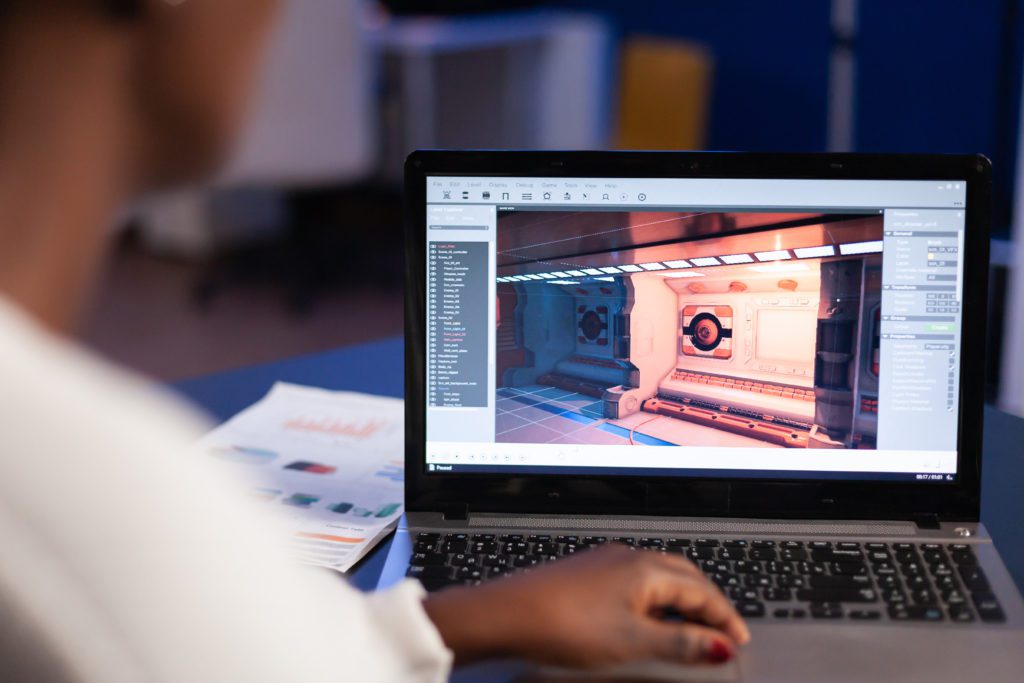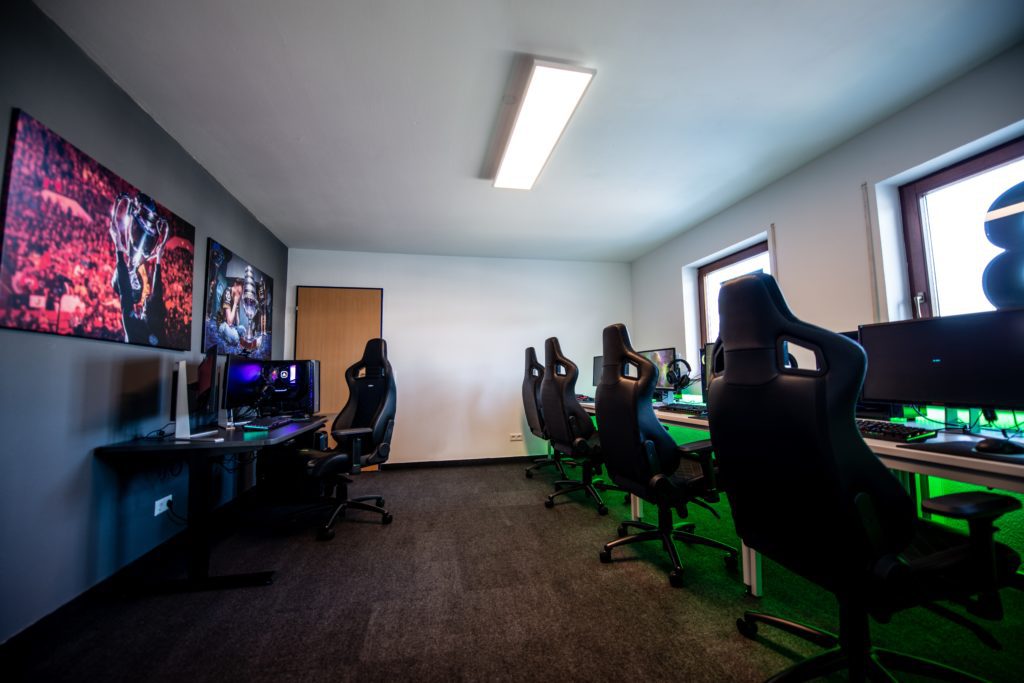
If you’ve ever dreamed of working in the arts, a career in the B.C. creative industry deserves your attention.
British Columbia is arguably Canada’s most exciting province when it comes to film, art, and design. Ryan Reynolds agrees.
Not only is the much-loved Hollywood actor from Vancouver, but he’s also shot two movies in the past half-decade that have used the cosmopolitan city as its location.
But it’s not just Vancouver that’s appealing to the arts, it’s the entire province. If you’ve ever wanted to start or switch to a career in the creative industry, we recommend you take a serious look at British Columbia.
In this article, we’ll cover:
- An overview of the creative industry in B.C.,
- Actionable steps for how to get into the B.C. art biz (in general) and in the Greater Vancouver area (specifically),
- How to connect to the industry, build a network, and grow a meaningful career, and
- Advice for how to get ready for your closeup.
(Only kidding on that last point. We’re a coworking space, not a high-end salon. We can recommend one though. Contact us.)
But we digress.
Up next: we share an overview of B.C.’s creative industry.
A Career in B.C. Creative Industry: An Overview

Four main industries make up B.C.’s creative sector:
- The Motion Picture Industry
-
-
- Includes the film and television subsectors
- B.C. boasts the largest film hub in Canada
-
- The Music Industry
-
-
- Think sound engineering and music recording
- The province is the third largest music centre in the country
-
- The Gaming Industry
-
-
- Anything related to interactive and digital media, e.g. Alternate and Virtual Reality (AR/VR) and more traditional forms of video game design belong to this category
-
- The Publishing Industry
-
- Includes anything related to the written word, e.g., book and magazine publishing
- B.C. is Canada’s second largest English-language book publishing market
Honourable mentions include the advertising and marketing sectors.
Whether we’re talking film, marketing, design, or gaming, the steps we share in this article can be used to build a career in any B.C. creative sector.
Before we go over the steps, however, we’ll dive into the strength of the B.C. creative sector and what it means for job prospects.
Let’s review the numbers next.
A Career in the B.C. Creative Industry: Job Prospects By The Numbers

B.C. and its largest city, Vancouver, attract creative companies from all over the world. They can do this because they:
- Have a highly-trained workforce,
- Offer an enviable live-work balance,
- Come with a cosmopolitan feel (where Vancouver is concerned),
- Give incentives to the industry, and
- Can call themselves Ryan Reynolds’ birthplace
Only kidding on that last point. While we’re sure Ryan’s massive success can’t hurt, it’s not a main reason for why creatives thrive in B.C.
Take incentives. The B.C. government likes companies who employ creatives and reward them financially for doing so.
For example, Film Incentive BC (FIBC) offers tax breaks for labour costs. Essentially FIBC incentives cover a portion of an employee’s salary.
What types of companies do these tax credits help? Those involved in film, television, digital animation, and visual effects (VFX) production in British Columbia.
These perks have contributed to a strong pool of talented artistic professionals. As of 2021:
- Over 58,000 people worked in B.C.’s creative sector who …
- Generated over $4.4B in GDP for the province.
(For more stats on the sector, we recommend you read Creative BC’s latest Impact Report.)
How can you become part of the vibrant industry, then? Keep reading for our 8-steps to creative career-building.
8 Steps to Building a Career in the B.C. Creative Industry

Regardless of industry, there’s a step-wise approach budding creatives can take to break into it. The route’s not necessarily easy and it’s not fast but it has proved to help many people build a creative career.
(Take the career of our favourite funny guy, Ryan Reynolds. He’s far from an overnight success. Start at 8:00 of this interview between him and The National’s Ian Hanomansing to hear Ryan’s take on a slow burn to fame.)
Back to the steps to building a creative career. We begin with Step 1: research, research, research.
Step 1: Research

When deciding on a career path, we recommend you start by collecting as much info as you can on your options.
Creative BC is one of the best resources to help you do this. An independent non-profit organisation run by the Province of B.C., Creative BC aims to build and encourage B.C.’s creative sector.
Creative BC supports the industries we mentioned earlier:
- Film (including animation)
- Music and sound engineering
- Interactive and digital media (aka gaming)
- Book and magazine publishing
… and offers or manages …
- Funding Programs
- The Provincial Film Commission
- Tax Credits for Motion Pictures
- Attraction and stewardship of investors
- B.C. Creative Sector Annual Impact Report
- Creative Industries Economic Results Assessment (CIERA) Tool – data on B.C.’s creative industries.
For more training, work experience, and networking suggestions for starting a creative career in B.C., visit Creative BC’s website.
Now that you’ve done your research on the options, it’s time to decide on a career path.
Step 2: Choose a Creative Career Path

Before you work toward busting into a career in the B.C. creative industry, you have to first decide which part to bust into.
For example, the film industry alone has four segments or options for creative pathways. Each has its own requirements for entry. Depending on which one you choose, if you go the film route, will determine what you’ll need for training and experience. (More on these later).
The film industry’s four career pathways are:
- Above-the-Line (ATL) – Creative lead careers (writing of screenplays, financing, filming, and producing)
- Below-the-Line (BTL) – Creative support careers (accounting, hair and makeup, props, and production assistants, to name a few)
- Animation, VFX + Post Production – Creative tech careers (editing, visual effects, sound and music)
- Film Adjacent – Careers that support the other three
As an actor and producer, Ryan Reynolds chose the ATL route. (With a personality and a face like his, we’re glad we did, are we right!?)
Ask yourself:
- Which creative career path is right for me?
- Which jobs best suit my interests, personality, strengths, etc.?
- How can I go about building that type of career?
- What education and experience do I need to get my first job?
- What are the job prospects in my chosen field?
- What type of salary can I expect to earn initially? After 5 years? After 10?
A career may sound enticing until you figure it’ll take tens of thousands of dollars in education and years of training before landing your first job.
A situation like this may be fine if you’re just starting out but if you’re looking to make a change mid-career, there may be smarter, more efficient, more money-savvy choices available.
Step 3: Use Your Connections

The B.C. creative industry can be highly competitive. Having said that, there are also lots of opportunities if you know where to look.
- Use your personal network. Ask around.
- You may be surprised to find out you’re one or two degrees away from someone working in the industry. These connections are indispensable ressources who can give you “an in” or advice.
- Research who else you need to speak with
- The internet has put the world and its people at our fingertips. Use it to connect with and ask advice from those in the industry.
- People love offering help. If you’re respectful of their time and what you’re asking of them, most people are happy to talk about their career path and offer guidance.
- If you don’t know him, we wouldn’t recommend contracting Ryan Reynolds. The Hollywood funny man may be a little busy. Having said that, you never know!
- Be persistent, diligent, and open to advice.
- These are the same qualities you need to work in the creative biz. Practice them on your way to breaking into it.
Step 4: Train

A creative career pursuit is impossible without the right training. Training ranges from weekend workshops and on the job mentorship to extensive multi-year programs.
How do you know where to start your schooling?
In Step 1, you figured out what career you want to pursue. Now it’s time to narrow down what type of education you need to get there.
Ask yourself:
- What type of education and training do I need to pursue my dream career?
- Where can I find the best programs, certifications, and workshops for that education?
- Which colleges and universities offer these programs?
- Out of what you found, which schools and programs are next for what you want ?
Next, we offer recommendations to help you answer those questions.
How to find the right creative education

Before you pay for an expensive education, we recommend you do the following:
Research the various schools, departments, and programs related to your chosen career.
How? We like the Linkedin Stalker Method:
- Go to Linkedin
- Find people with your dream career. A simple search using the job title should do the trick.
- For instance, if you want to be a Chief Creative Officer (CCO), type that into the search bar then take note of the names that come up.
- Look at their education, training, and experience.
- Bonus: reach out to some of them to ask what they thought of the schools they attended. What did they think of the program they took? Was it worth the time and investment?
- First-hand reviews go a long way to helping you narrow down your choices
- Research your shortlist of schools, programs, and employers
- Contact the colleges and universities offering the program you’re interested in
- Make the best choice possible based on:
- Reputation
- Student reviews and testimonials
- Financial support
- Full- or part-time (can you work and take the program at the same time, for example?)
- Overall best fit (location, online vs in-person, etc.)
- What’s required by related union or professional organisations?
- For example, The Writer’s Guild of Canada requires members to have a current contract under their belt, but makes no requirements for education.
In the following section, we introduce some of the most reputable and noteworthy creative schools in B.C., Canada, and North America.
Creative schools & programs in B.C. and beyond

It would take an entire blog to cover the available art schools in Canada alone. Having said that, here’s a sampling of some of our favourites to get you started:
- For budding movie school grads: Vancouver Film School
- For visual arts, digital media, and computer design: Emily Carr University of Art & Design
- For Graphic and Digital Design: The University of the Fraser Valley
- For Animation: Animation Mentor
- For Digital Art & Animation: CG Spectrum
For a more holistic view of what’s available in B.C. for a creative education, head to Creative BC’s website—they’ve put together a long list of options.
For the record, our funny guy Ryan doesn’t have an art-related education. Instead, Ryan got into the biz by working in it at a young age.
Ryan started acting at the age of 13 and graduated from Kitsilano Secondary School in 1994. He quit acting not long after graduation at the age 19 because he got discouraged. (See—a creative career is hard!) He then enrolled at Kwantlen Polytechnic University but dropped out a few months later to move to Hollywood with a friend.
The rest, as they say, is Deadpool movie history.
Step 5: Network

Congratulations? You’ve graduated. Now what?
The single biggest, most important thing you can do after graduating—and while in school, frankly—is network.
Wait! Don’t leave yet.
We know we’ve used the dreaded N-Word but hear us out. What we need by networking is to build good relationships with people in your field.
The film, creative, and marketing industries are huge networks. The more people you know in them the easier it’ll be to:
- Connect with a mentor
- Gain experience that’ll help you build your career
- Find out about job opportunities
- If you know Ryan Reynolds, we sure as heck hope you’re asking him for advice! Or an introduction. Or ten introductions.
Besides classmates, professors, and other contacts gained in school, there are many other ways you can grow your creative network.
Volunteer as a way to network in the creative industry

Volunteer work can be invaluable if you’re a new grad without work experience. It helps you:
- Build your resume, and
- Develop important contacts in the field.
Both of these things will help you find future paid work. Start by attending and/or volunteering at:
- Industry events,
- Forums,
- Art and film festivals,
- Career expos,
- Workshops, and
- Association events
Here’s a list of events to get you started:
- Vancouver International Film Festival
- Whistler Film Festival
- Women in Film and Television Vancouver
- DOXA Documentary Film Festival
- Cineworks Independent Filmmakers Society
- Film and art school student productions and exhibits
- Motion Picture Industry Career Expo
- Documentary Organisation of Canada BC chapter (DOC-BC)
- Vancouver Art Gallery
- Creative Industries Week
… and here are lists of other places to look for networking opportunities:
Above all, do (more) research!
Get to know the industry leaders, professionals, industry organisations, animation companies, marketing, creative, and advertising firms, and other resources in your area of interest. The effort will pay you back, we promise.
Step 6: Gain Experience & Find Work

You’ve done the research, you’re used your contacts, and you’ve earned the education. Time to get to work!
The questions to ask yourself now are:
- How do you go about finding your first industry job?
- Do you go the employee, contract, or freelance route?
Let’s dive into both questions. We’ll start with a popular way to gain experience—find an internship.
Find an internship in the B.C. creative industry

Internships are a great way to gain entry into any sector, including starting a career in the B.C. creative industry.
In theory, a graduate or student in the midst of completing a program will enter into a supervised internship to:
- Gain experience in the industry,
- Grow their network,
- Try out a career to see if they like it or not,
- Get a leg up on entry level jobs as they become available, and, just maybe,
- Be hired by the company they’ve interned with.
True, internships don’t pay. If you want it badly enough, though, you can always work in a grocery store to make ends meet while you gain experience.
Some of the best spots to search for internships include popular job sites:
- Indeed
- Glassdoor
- Workopolis
- BC Jobs
- BC Alliance for the Arts
- Vancouver Film/TV/Media Community and Jobs Board
- Art and animation school job boards
The one snag with schools: you often have to be a current student or alumni to access their career boards—that’s one major perk of attending their institution.
Freelance, contractor, or employee—which option is right for you?

Depending on your chosen career path, You may be looking at any of the following types of work:
- Employee
- Contract
- Freelance
In some cases, the nature of the work will determine what type of job situation you find yourself in. For example, animation jobs often require a few years of contract work before landing a full-time permanent position.
In other cases, depending on your personality or amount of flexibility you’d like, you might choose to only work as a freelancer. (Graphic designers often fall into this category.)
Whatever the case, we recommend you do your research—there’s that word again—to:
- Find B.C. creative companies you’d be interested in interning and working with.
- Reach out to them directly. A quick web search will often pull up the name and email address of the person to contact.
- Be tenacious, patient, and open to hearing a lot of “no’s” in your search for a creative position. Your effort will pay off in time.
Now, what to do when you’ve landed your first job? The answer to this question may surprise you. Keep reading to find out more.
Step 7: Work Hard & Be Nice

Huzzah! You’ve landed your first creative gig. Congratulations! How can you make a good first impression in this and future jobs in the industry?
It seems almost too obvious to admit but here’s the secret to future creative job success: Be nice.
You’d be surprised by how far kindness can get you in a career. Excellent soft skills like ….
- A strong ethic,
- Positive attitude,
- Openness to learn,
- Dependability,
- Willingness to help, and
- Team-player
… will take you far. If you’re a jerk but your coworker is a gem, who do you think will be considered first for the new art director role?
Strong people skills will trump technical skills every time when it comes to building your career. The latter can be learned while the former are harder to develop.
Stay kind, stay humble, and work hard. Before you know it, you’ll have a dozen years in the B.C. creative industry listed on your resume.
Step 8: Join Professional Organisations & Unions

If your chosen career path has a related professional organisation, guild, or union, we recommend joining it.
Although membership in one of these industry groups isn’t always necessary to work in a field, nor does it guarantee you’ll find a job, it’s a great way to network (see Step 5).
Below is a list of major creative associations in British Columbia. The various groups cover book publishing, interactive and digital media, magazine publishing, motion picture, and music and sound recording.
The list is by no means exhaustive. Consider it a good starting point into the B.C. creative world.
N.B. We’re not sure which, if any, of the following associations Ryan Reynolds is a member of but we’re sure he’s a member of one of them. But we digress. Again.
Here’s the list:
- Alliance of Canadian Cinema, Television and Radio Artists (UBCP/ACTRA)
- Animation & Visual Effects Alliance Of BC (AnimVFXBC)
- The Association of Book Publishers of BC (ABPBC)
- DigiBC – The Creative Technology Association of B.C.
- First Peoples’ Cultural Council (FPCC)
- The Magazine Association of British Columbia (MagsBC)
- The Motion Picture Production Industry Association of British Columbia (MPPIA)
- Music BC Industry Association (MusicBC)
- The Vancouver Post Alliance (VPA)
- Visual Effects Society, Vancouver Section
- VR/AR Association of Vancouver (VRARAVan)
After You Break Into the BC Creative Industry: How To Thrive In Your Career

We’ve reached the end of our 8-step forlay into a career in the B.C. creative industry. Let’s recap the steps:
-
- Research various creative industries and careers
- Choose a creative career to go after
- Use your current connections to gain intel about your chosen career
- Get the necessary training to get a job in your field
- Network to help your job prospects and build industry connections
- Gain experience and find a job in your field
- Work hard and be a nice person!
- Join a professional association that advocates for your industry
And we’ll add a 9th step—have fun while you’re doing it!
The process of starting or changing careers, especially into one as competitive as the creative sector, can be long and discouraging at times. Stay focused on your end goal.
A Career in the B.C. Creative Industry: What’s Next?

We hope the previous chapters have given you a solid plan to pursue your creative dreams.
If we can leave you with one piece of career advice from Ryan Reynolds, it’s this:
“You can’t be good at something unless you’re willing to be bad.”
No matter what your creative aspirations are, don’t let the fear of being bad at something prevent you from getting started.
At Backbone Executive Offices, our community is made up of people from the B.C. creative sector who are learning and re-learning this lesson. From newbies to veterans, photographers to graphic designers, web developers to writers, our members stretch the entire industry.
When you become a member of Backbone, you join a group of professionals who have or will go through the same challenges as you. You’ll be given the chance to connect with people in the B.C. creative industry, network (see Step 5), and support one another.
(We can’t guarantee that Ryan Reynolds will show up at Backbone but you never know. He may decide to visit his home province and make a stop in Abbotsford. Dream big, we say!)
Whatever happens with Ryan, we invite you to visit Backbone. We promise your membership will support your career in the B.C. creative industry.
Share this:
Want a tour of the space?
Our community of go-getter entrepreneurs could use another one like you! Shoot us a message if you have any questions or want to book a showing.
Backbone Coworking & Executive Offices
104-32615 S Fraser Way
Abbotsford, BC, V2T 1X8
Phone: 236-233-3200
